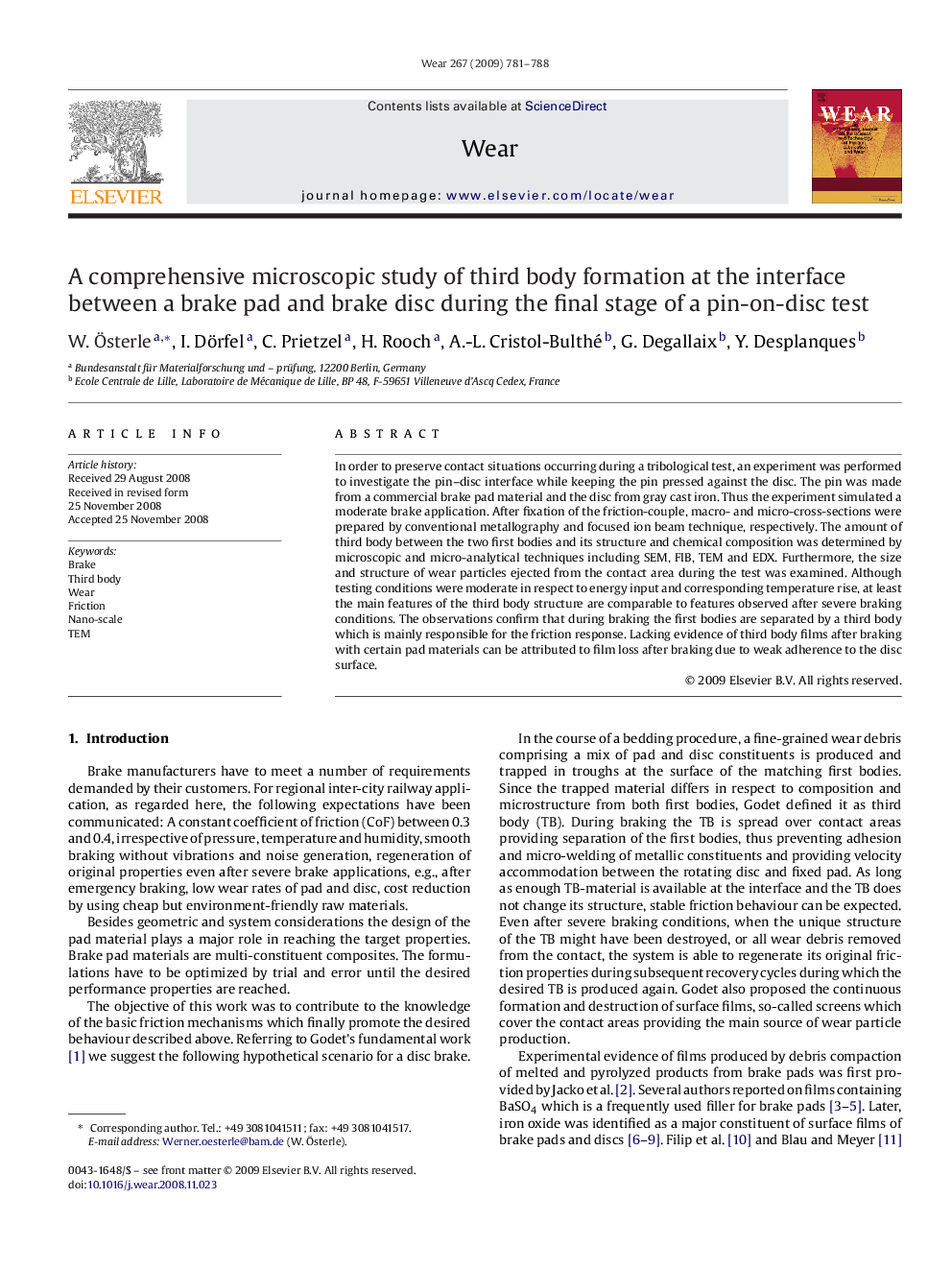| Article ID | Journal | Published Year | Pages | File Type |
|---|---|---|---|---|
| 619330 | Wear | 2009 | 8 Pages |
Abstract
In order to preserve contact situations occurring during a tribological test, an experiment was performed to investigate the pin-disc interface while keeping the pin pressed against the disc. The pin was made from a commercial brake pad material and the disc from gray cast iron. Thus the experiment simulated a moderate brake application. After fixation of the friction-couple, macro- and micro-cross-sections were prepared by conventional metallography and focused ion beam technique, respectively. The amount of third body between the two first bodies and its structure and chemical composition was determined by microscopic and micro-analytical techniques including SEM, FIB, TEM and EDX. Furthermore, the size and structure of wear particles ejected from the contact area during the test was examined. Although testing conditions were moderate in respect to energy input and corresponding temperature rise, at least the main features of the third body structure are comparable to features observed after severe braking conditions. The observations confirm that during braking the first bodies are separated by a third body which is mainly responsible for the friction response. Lacking evidence of third body films after braking with certain pad materials can be attributed to film loss after braking due to weak adherence to the disc surface.
Keywords
Related Topics
Physical Sciences and Engineering
Chemical Engineering
Colloid and Surface Chemistry
Authors
W. Ãsterle, I. Dörfel, C. Prietzel, H. Rooch, A.-L. Cristol-Bulthé, G. Degallaix, Y. Desplanques,
